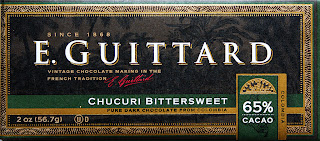One of the more interesting topics of discussion at the Northwest Chocolate Festival was the difficulty for chocolate makers to get high quality cacao beans. Unfortunately, the quality problem was not due to any single cause. The primary issue, though, seemed to be the existing structure of financial compensation for farming cacao.
Commoditization
Nearly all cacao is sold based on commodity exchange market prices per metric ton (or tonne) of beans (recently around $2700), with a premium of $0 to $160 per ton based on origin. However, in the cacao market, the premium is not based on quality, but rather on consistency. Thus, traditionally high volume and low-quality cacao bean markets such as the Ivory Coast and Ghana are given the highest $160 premium.
As I explained in
Chocolate Labeling Revisited, Fair Trade typically only adds about 5% to the price, and again such deals do not consider the quality of the cacao beans. The beans are simply a commodity.
Thus, the typical financial incentive for cacao farmers is simply to produce as much as possible, regardless of the bean quality.
Hybrids
So, what's a farmer to do when a hybrid cacao comes along that is twice as productive as their existing trees? CCN51 is such a hybrid, and it seems to make financial sense to plant it. When some disastrous weather ruined large numbers of cacao trees in Ecuador in 1997-98, many farmers replanted with CCN51. Planted near other cacao, cross-pollination occurs with existing trees. Touted as twice as productive with the same quality, CCN51 lives up to the former, but fails at the latter. It is now prevalent in Ecuador, Peru, and Colombia, and there are new hybrids on the horizon that may increase yields by a factor of four over heirloom cacao.
Not only does CCN51 cacao have worse flavor than heirloom cacao, but it also has different fermentation times and destabilizes the land. CCN51 requires a longer fermentation time than the heirloom cacao with which it is often grown, fermented and dried. As a result, something has to suffer: the CCN51 ends up underfermented, the heirloom cacao overfermented, or sometimes both!
The biggest problem for the farmer, though, is that the higher productivity of CCN51 has a cost: it depletes the soil after about 8 years. Much of the extra income from CCN51 then needs to be spent on fertilizing (and that can be especially problematic for less accessible farms) and organic homeostasis is over.
Prices
Once artisan chocolate makers find great cacao beans, they pay a much higher premium to ensure they get the beans they want. Chuao and Porcelana beans typically cost around 400% of the market price for generic cacao.
At those prices, farmers can earn a good living with lower yield cacao. However, even most other quality cacao is sold for much less, and the lower prices may not be sufficient to incentivize farmers to continue to grow heirloom cacao. Alternatives include planting higher yielding cacao, growing other crops instead of cacao, or quitting farming altogether. On many farms, other crops, such as plantains, are already grown alongside cacao.
Fermentation and Drying
Great genetic heritage alone, though, isn't sufficient for getting quality beans. The cacao beans must be properly fermented and dried as well. Many makers are actively involved with the process and help educate their suppliers to improve fermentation and drying of their cacao beans. The chocolate experts at the Northwest Chocolate Festival were generally positive that improvements in fermentation and drying are occurring throughout the industry, even with mainstream cacao.
Conclusion
Of course, cacao farmers are not motivated solely by money. As a general rule, they love their farms and care about their trees. However, when financial incentives are aligned against growing quality cacao and instead encourage increasing yields, it is more difficult for heirloom cacao farmers to make a decent living.




















